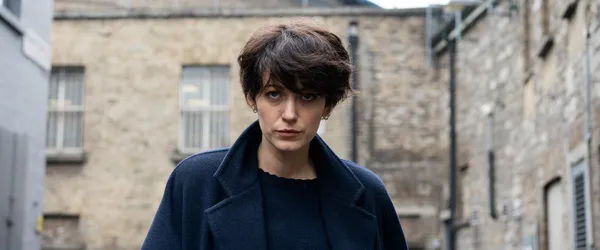Eye For Film >> Movies >> The Rhythm Section (2020) Film Review
The Rhythm Section
Reviewed by: Andrew Robertson

Stephanie Patrick's family are dead. A great loss, but one that may not have been an accident. When she's offered answers it sets her on a course for revenge. That path is not a smooth one however, the old saw about digging two graves doesn't begin to cover the effort and errors of her search for retribution.
"it's not a tragedy, it's a cliche", and The Rhythm Section is full of them. A conspiracy wall, a selection of training montages, its depictions of the hinterlands of espionage and vice, the red light and red lines. Yet it does have its moments. The camera close to Blake Lively's face as she makes a choice between waiting and drowning. The camera's cold gaze from above at her lost in the freezing space. Spies may well have come in from the cold in the past, but here this is secret agency found not just in the shadows but the shivers.
We've had stories of this ilk before, La Femme Nikita's been remade sufficiently often that this might count as one. There's been similar territory in Michael Keaton's work in American Assassin, in Tommy Lee Jones in The Hunted, even a succession of similar figures played by Stacey Keach and Brian Cox. These roles all tie back to an implication from one of the ur-texts of these one man armies, Rambo's Trautman (the great Richard Crennan) built a system that would teach a man to "eat things that would make a billy goat puke". Jude Law's turn is by parts bobble-hatted and bullying, building Stephanie into someone new. Tempered not just by temperature but quenched in blood. The Global War On Terror is a conflict that calls for the collateral, and The Rhythm Section owes debts in its damages.
Heart as the drums, lungs as bass. The recurring presence of that description as a way of grounding the intent to do violence. The recurring presence of that beat in the soundtrack, one of any number of thumps. Sometimes it's the loop of the story, or the return of a particular refrain, memory as melody. Sometimes those are sophisticatedly syncopated, subtle and strong, at others they are almost comic car crashes. Song choices too are occasionally a stretch, a heroin user setting up an ambush to the strains of I'm Waiting For My Man should pop a bit more than twenty-six dollars in the "on the nose" jar.
That list of clichés includes not just crosses and double crosses, tradecraft and techniques, the whole business of business becoming personal. Among them though, some moments of invention. It's easy to soundtrack imminent violence, but Brenda Lee's I'm Sorry is a choice. Hair and costume also evoke 1960, the femme fatale as an archetype goes back further than that.
It's based on Mark Burnell's novel. He scripts, produces. A second feature based on one of his works, Remote Control, is somewhere in the wilderness of preproduction. Director Reed Morano has a CV that speaks to many of this film's strengths. Her debut feature Meadowland was similarly steeped in grief, I Think We're Alone Now also imbued with difficult relationship in complex aftermaths. Her extensive history lensing music videos, including Beyonce's Lemonade feels evident in some of the song choices. Here cinematographic duties are taken by Sean Bobbitt. Though the locations are significantly wider ranging there's a similar balance of velocity and violence as in The Place Beyond The Pines. Despite its international scope it's often in the proximate, any number of shots are centred on its central cast, alone in landscapes that are often stark in their pastoral peace.
While the title is taken from the book, The Wrecking Crew suggested that sufficiently skilled musicians can make lasting impacts even with instruments more tuneful than Chicago Pianos. Steve Mazzaro's score often relies on long tones contrasting with the pulmonary pounding of heart and lungs, building from them to persuasive percussion. In claustrophobic corridors and busy buses it feels a thing tight and tense.
Blake Lively is at the centre of the film, but with Jude Law and Sterling K Brown all three become assets seeking to differently handle each other. It is less a search for a McGuffin than a Mister, though it too visits Scotland there are fewer than 39 Steps in its search for the hidden figure of U17. As with the Bond films there's a messy interplay of the alphanumeric and the three letter agencies. Not just ones and twos, but hes and she. Tenet suggested that you could make an entire film into a cipher, a puzzle that required a key. The Rhythm Section is more akin to a music box, once opened it spins and runs through the motions of a dance, but for all its variations it's a tune you've heard before.
Reviewed on: 02 Apr 2022

















